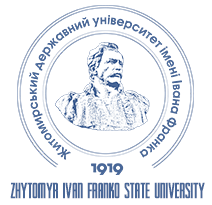USE OF LMS MOODLE IN THE PROCESS OF CADETS’ SELF-STUDY IN FOREIGN LANGUAGE
DOI:
https://doi.org/10.35433/pedagogy.2(105).2021.78-87Keywords:
cadets, self-study, foreign language acquisition, LMS Moodle, information and communication technologies, activities, recoursesAbstract
Among the priority tasks of today’s higher education is preparing specialists capable of independent research, accumulation and application of knowledge. The article considers self-study as key element of education and cognitive activities of future officers of the Armed Forces of Ukraine and examines the organization of self-study in the context of mastering a foreign language with the use of the learning management system Moodle. It has been established that applying new methods and techniques, alongside other forms of self-study, selecting and designing more suitable activities for cadets during independent training as well as integrating the learning management system Moodle enhances the overall process of learning a foreign language and increases the overall productivity. Introducing the LMS Moodle into self-study while mastering a foreign language in military higher education institutions contributes to acquiring essential skills, namely, obtaining the necessary information, analyzing professionally oriented foreign language texts, assessing and applying available information to accomplish missions and communicating in a foreign language. Conducted research shows that cadets’ engagement in self-study improves if the course is methodically designed to create a holistic educational information environment. "Pedagogy of social constructivism" which underlies the philosophy of the Moodle learning management system enables the effective organization of interactions which is crucial in acquiring competency in a foreign language. Moodle facilitates the design and development of courses adapted to the specifics of a particular discipline, considering the requirements of the teacher and the needs of the cadets, who, with the help of this platform, are able to build a comfortable learning trajectory.
References
Anisimov, A.V. (2017). Informatsiini systemy ta bazy danykh. [Information systems and databases]. Kyiv: Lenvit [in Ukrainian].
Antoniuk, M.S. (2005). Psykholohichni osoblyvosti formuvannia u studentiv umin I navychok samostiinoi roboty. [Psychological features of students’ formation of skills and abilities of independent work]. Suchasni pedahohichni tekhnolohii u vyshchii shkoli – Modern pedagogical technologies in higher school, 1, 111-113 [in Ukrainian].
Bykov, V.Yu. (2010). Suchasni zavdannia informatyzatsii osvity. [Modern tasks of informatization of education]. Informatsiini teknnolohii i zasoby navchannia – Information Technologies and Teaching Aids, 1, 23-41 [in Ukrainian].
Drach, I.I. (2004). Samostiina robota studentiv vushchyh navchalnyh zakladiv yak vazhlyvyi element suchasnoi pidhotovky fakhivtsiv. [Independent work of students of higher educational institutions as an important element of modern training]. Novi tekhnolohii navchannia – New Learning Technologies, 37, 86-90 [in Ukrainian].
Zhelezniakova, E.M. Zmiivska, I.O. (2016). Upravlinnia samostiinoiu robotoiu studentiv u systemi Moodle. [Management of independent work of students in the MOODLE system]. Pedahohichni nauky: teoriia, istoriia, innovatsiini tekhnolohii – Pedagogical sciences: theory, history, innovative technologies, 6, 30-43 [in Ukrainian].
Koval, T.I. (2013). Vykorystannia suchasnykh elektronnykh navchalnykh platform u pidhotovtsi fakhivtsiv z vyshchoiu osvitoiu. [The use of modern electronic learning platforms in the training of specialists with higher education]. Inozemni movy – Foreign Languages, 1, 42-44 [in Ukrainian].
Nikolaieva, Y.K., Boretsa, H.E, Maier, N.V. (2015). Suchasni tekhnolohii navchania inozemnykh kultur ta mov u zahalnoosvitnikh I vyshchykh navchalnykh zakladakh. [Modern technologies of teaching foreign languages and cultures in secondary and higher educational institutions]. Kyiv: Lenvit [in Ukrainian].
Rashevska, N.V., Semerikov, S.O. (2012). Intehratsiia MLE Moodle v system dystantsiinoho navchannia Moodle. [Integration of MLE-Moodle into the Moodle distance learning system]. Novitni kompiuterni tekhnolohii – Latest Computer Technologies, 1, 203-208 [in Ukrainian].
Vasylyshyna, N.M. (2020). Perevahy zastosuvannia tsyfrovoho navchannia v universytetakh [Benefits of digital learning application at universities]. Visnyk Zhytomyrskoho derzhavnoho universytetu imeni Ivana Franka. Pedahohichni nauky – Zhytomyr Ivan Franko state university journal. Рedagogical sciences, 4 (99), 61-68 [in English].
Yahelska, N.V. (2006). Zmist samostiinoii roboty maibutnikh ekonomistiv v protsesi ovolodinnia anhliiskoiu movoiu. [The content of independent work of future economists in the process of mastering English language]. Visnyk KNLU. Seriia pedahohika ta psykholohiia – Bulletin of the KNLU. Series: Pedagogy and Psychology, 10, 148-154 [in Ukrainian].
Downloads
Published
Issue
Section
License

This work is licensed under a Creative Commons Attribution-NonCommercial-NoDerivatives 4.0 International License.
Authors published in this journal agree to the following terms:
a) The authors reserve the right to author their work and grant the journal the right to first publish this work under the Creative Commons Attribution License, which allows others to freely distribute the published work with a mandatory link to the authors of the original work and the first publication of the work therein magazine.
b) Authors have the right to enter into separate additional agreements regarding the non-exclusive distribution of the work in the form in which it was published by this journal (for example, posting work in an electronic repository of the institution or publishing as part of a monograph), provided that the reference to the first publication of the work is maintained therein. magazine.
c) Journal policy permits and encourages the submission of manuscripts by the authors on the Internet (for example, in repositories of institutions or on personal websites), both prior to submitting this manuscript to the editorial board and as it contributes to the emergence of productive scientific discussion, and has a positive impact on the promptness and dynamics of citing a published work (see The Effect of Open Access).

 ISSN
ISSN 





